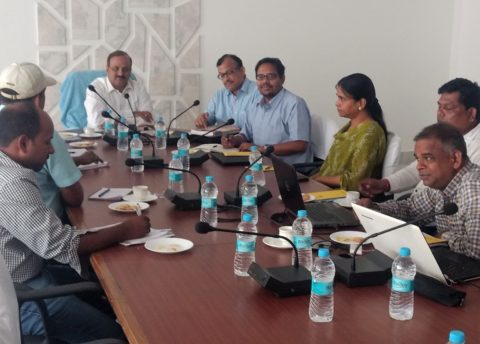
Meeting held with Chilika Development Authority scientists to discuss Chilika management plan upgradation
-
Coastal wetland conservation
-
Integrated delta management
-
Integrated management planning
In 2002, Chilika Lagoon became the first Asian Ramsar Site to be delisted from Montreux Record, following a successful hydrological restoration and basin-scale management interventions, which helped revive lagoon ecology and resources, particularly fisheries.
The Ramsar Advisory Mission recommended putting in place a single management plan with widely agreed goals and objectives to restore the ecological character of the wetland. Wetlands International South Asia, a longtime partner of Chilika Development Authority, drafted the management plan in 2012, which was endorsed by the the Authority’s governing body, chaired by Hon’ble Chief Minister for implementation.
In the last six years, the lagoon has undergone several changes. The habitat of Irrawaddy Dolphin has increased, and so has the extent of seagrass beds. Cyclone Phailin which landed near the lagoon in October 2013, nearly churned the wetland, shifting it to a freshwater state for a prolonged period. Yet the salinity regimes have tended to reestablish. The tourist visitation rates have been at an all-time high. Wetlands International South Asia, therefore, felt it apt to reassess the management plan, to take into account experiences and lessons learnt from implementation to date, as well as take into account new information that has emerged from wetland monitoring and elsewhere.

Welcoming support of Wetlands International South Asia, Chilika Development Authority convened a meeting on May 8, 2018, to initiate the process of management plan upgradation. Over the course of next three months, the two organizations will collaboratively assess the monitoring information to update the plan and recommend an action plan for the coming six-year period.
